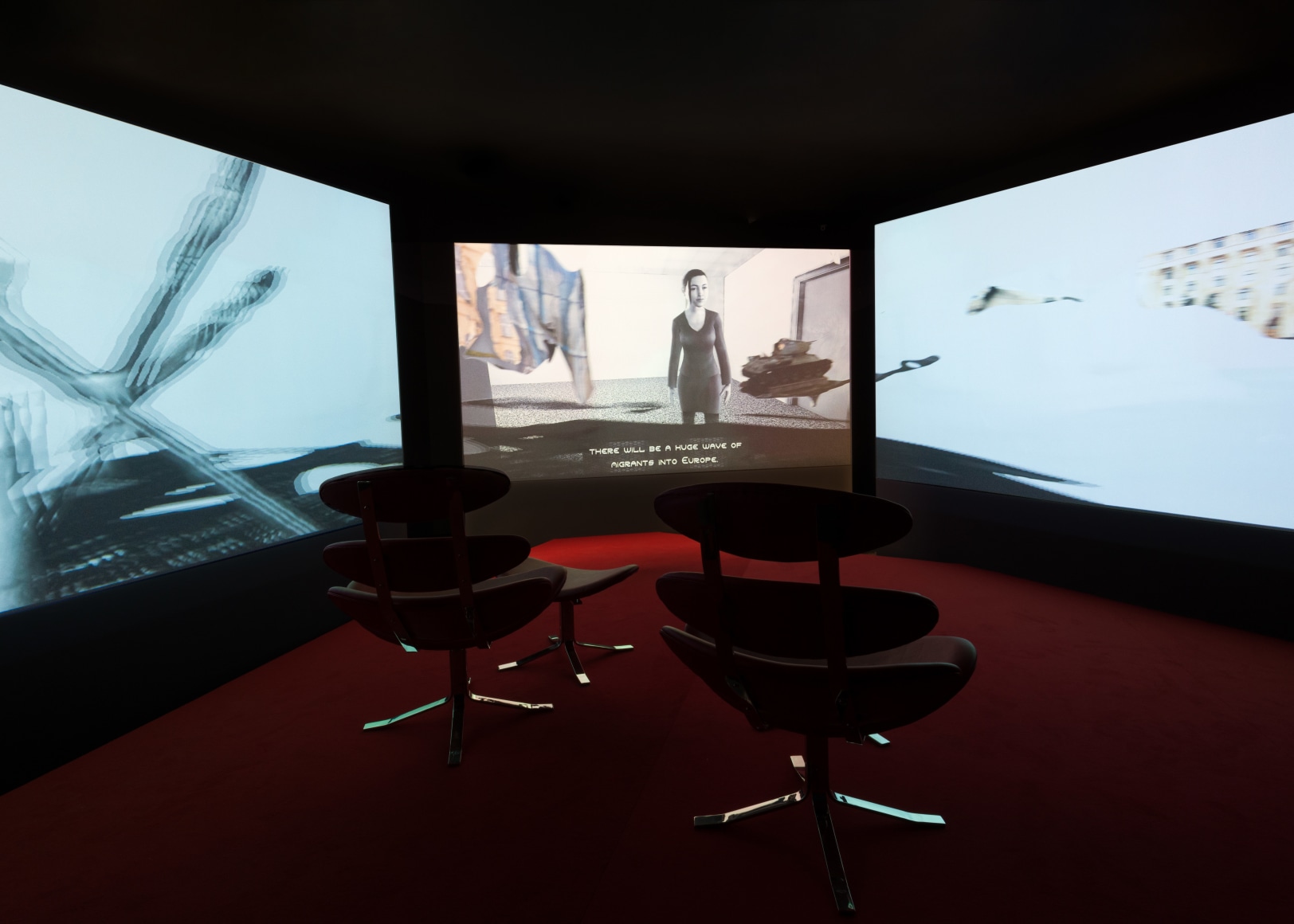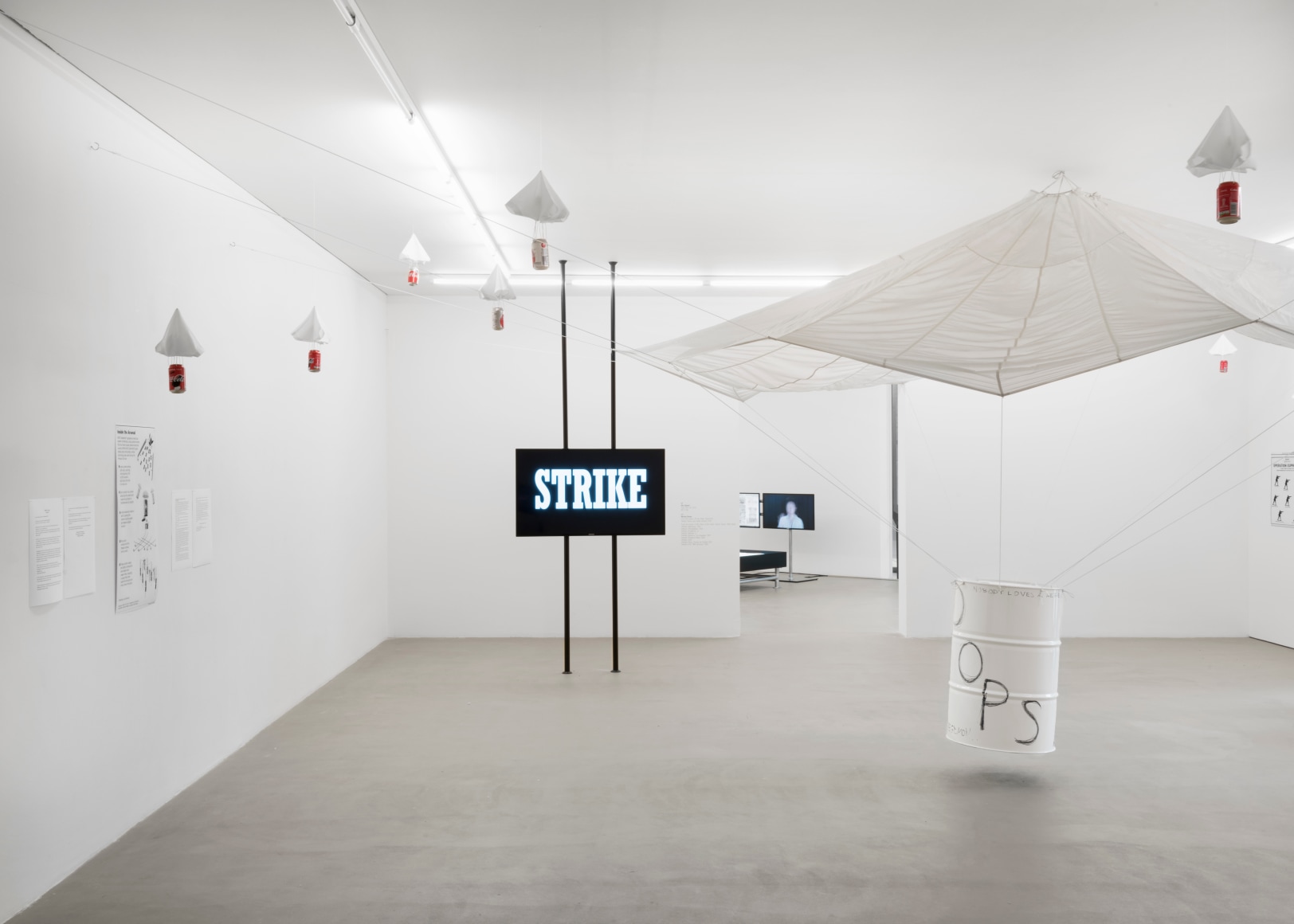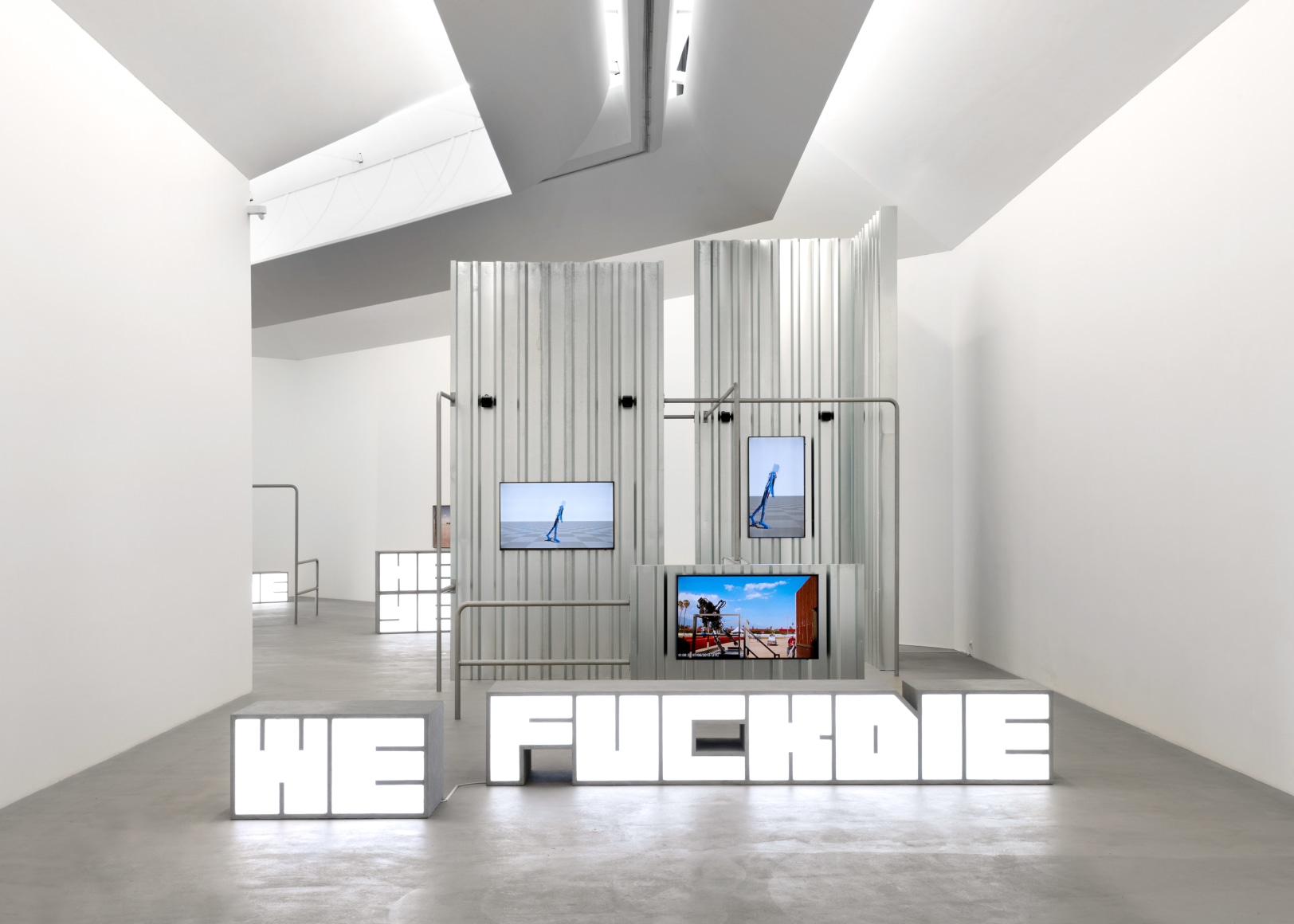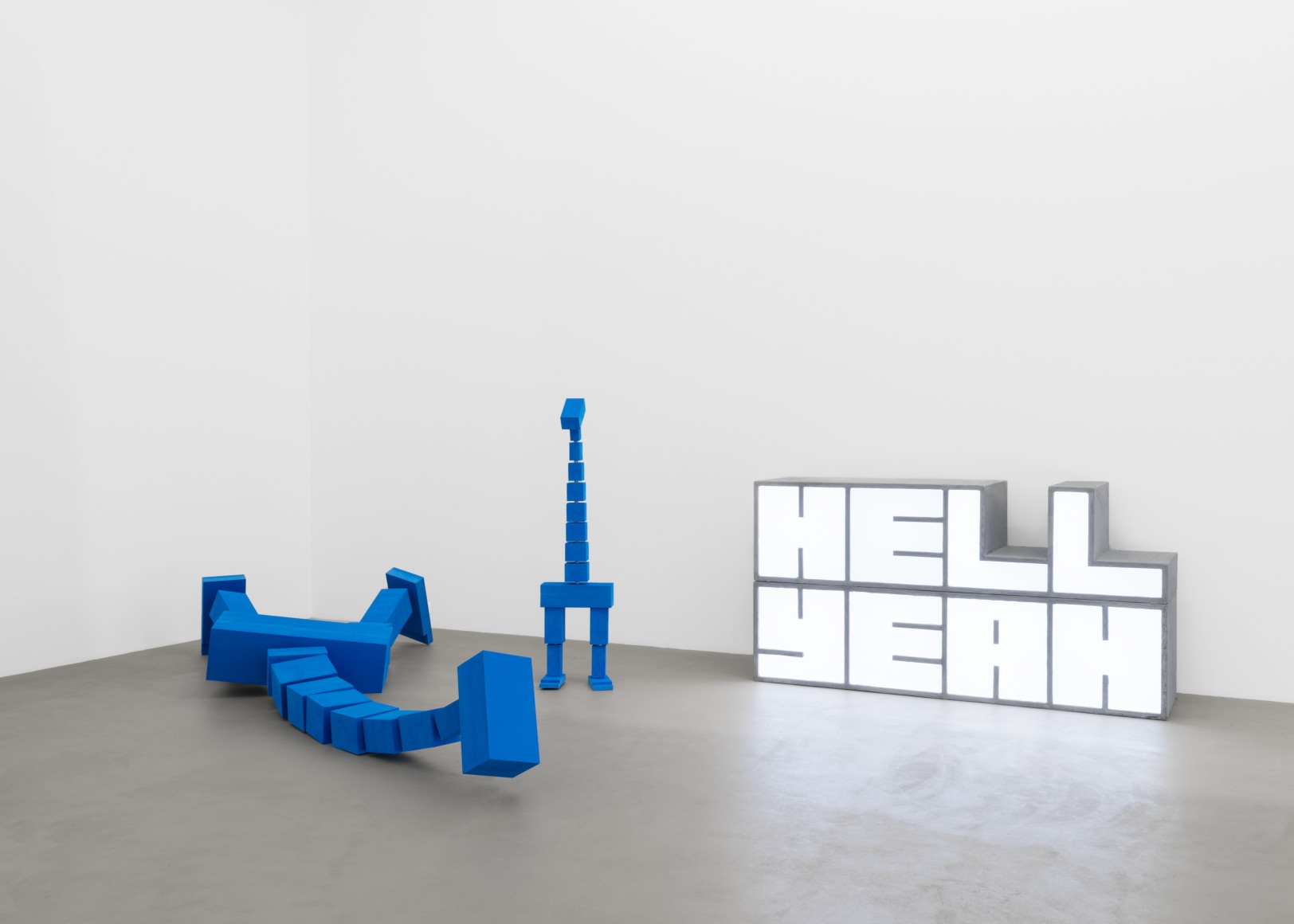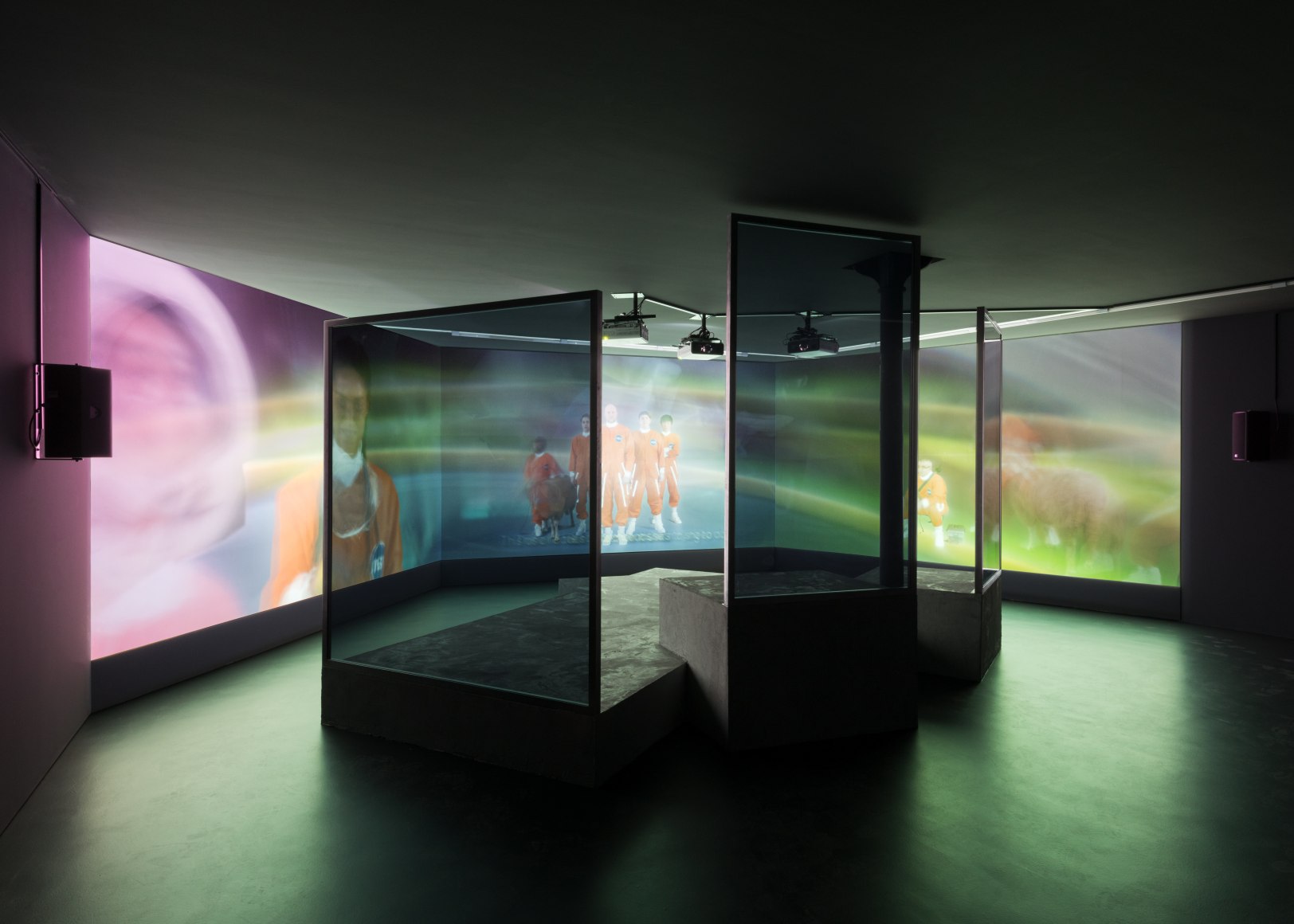The exhibition presents works by the artists Martha Rosler (Brooklyn, NY) and Hito Steyerl (Berlin) in a dialogue that brings intersections between their thematic interests and similarities in their uses of media into focus.
It is the first exhibition at a Swiss museum for both artists and the first show anywhere in which their works appear side by side. Yet the two oeuvres have a great deal in common, growing out of an unusually tenacious commitment to critical engagement with social and political issues. Resonances between their works speak to the affinity between their stances and the concerns both share—concerns that are of global significance and suggest both artists’ probing critical attention to the political developments of our time.
Reality, in their art, is always considered in its interplay with the audiovisual media that shape the fabric of today’s lifeworld and our identities, highlighting their disruptive impact on human lives. It is not surprising, then, that both Rosler and Steyerl have repeatedly turned to new media for their work. In addition to creating photography and collages, Rosler was an early pioneer of video art, which lets her broadcast feminist ideas and counter the myths peddled by television and magazines with alternative depictions of women and modern everyday life. Lately she has complemented photographs, photocollages, and action and project formats with a growing preoccupation with social media and drone technology. In part based on computer animations, Steyerl’s more recent video installations—whose aesthetic is strongly informed by the visuals disseminated through online platforms like YouTube—are among the most advanced work done by visual artists in this medium today.
Both artists choose to involve themselves in contemporary controversies while also studying their historical backgrounds and the role played by media. Fascinating in their aesthetic construction, Rosler’s and Steyerl’s works are formulations of resistance to the normalization of democratic decline, the privatization of public spaces and domains of life and their subjection to economic pressures, violence and oppression at the hands of private actors as well as the authorities, the reduction of the human being to his value as a source of labor and consumer, and the militarization of spheres of social life. In light of the rising tide of illiberalism around the world, the exhibition thus also reaffirms the museum’s commitment to showing art that does not shy away from contention in asserting the need to foster democratic structures, civic values, and tolerance.
(Source)

